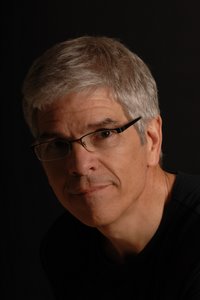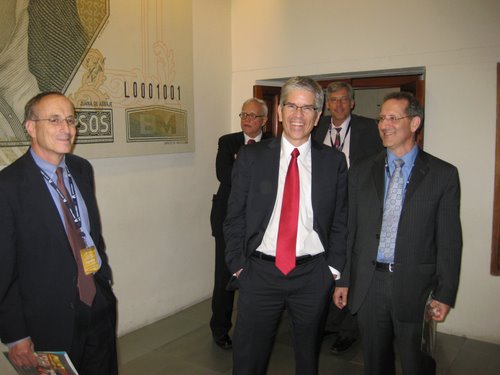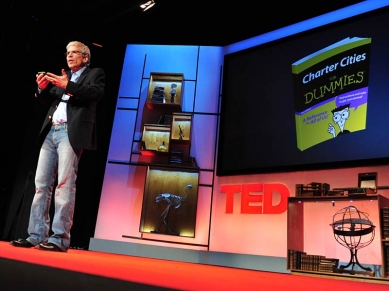- How The Dominican Republic Could Have A Brand New City As Powerful As NYC Within 10 Years
- How The Concept Of Startups Could Be Used To Eliminate Poverty
- Learn How The Ideas Which Formed Hong Kong Can Apply In The Caribbean
Full Interview Audio and Transcript

Personal Info
Sports Teams: Denver Broncos
Favourite Books:
- Why We Cooperate by Michael Tomasello
Favourite Entrepreneurs: Larry Page and Sergey Brin
Personal Blog: http://Chartercities.org
Interview Highlights
This is a condensed audio transcript. The full source audio is provided if needed. The interviewee may post corrections in the comments.
Adrian Bye: Today I’m talking with Paul Romer, who is at Stanford. Paul has done some pretty interesting stuff, including in the startup world, but also has some strong opinions on how to help some of the developing countries.
Paul, thanks for joining us.
Paul Romer: Yeah. Glad to be here.
Adrian Bye: Maybe could you tell us a little bit about your background and what you did before you got onto your current track?
Paul Romer: Yeah. In my professional career, there are really three distinct phases. There was a pure research academic career that was trying to understand the technological change within the context of the broad trends of economic growth.
That was very mathematical, very formal, very abstract, trying to deal with the tension between diminishing returns, which is the main focus in economics, and the reality of accelerating growth.
That’s 1.0; 2.0 was I went out and started a startup company that was trying to deliver better teaching materials to people who teach economics, stuff I started to develop for myself, and then I did a startup company to commercialize that, ran that for seven years, sold that.
3.0 now is coming back to these questions about economic growth, but thinking not about what will speed up growth in the leading countries of the world, but what could accelerate the process of catch-up growth in countries like Haiti or China and how could you make growth in Haiti look more like growth in China.
Adrian Bye: I’m curious as to why you’ve taken this path. If you’re doing research and things that you are trying to sell aren’t supposed to be displayed in an ivory tower? You don’t exactly go out and build a startup and sell it.
Paul Romer: One: I’m a restless guy. I get bored if I just do too much of the same thing. Two: I think there’s a very healthy interplay between the real world and the research world. People who just live in the ivory tower end up not influencing the real world, and I think they often end up not even doing good, pure research.
So I think the variety of exposures, the variety of challenges is actually both, its much more fun, much more challenging, and makes me a better scientist.
Adrian Bye: Now the reason Paul is here is I read an absolutely amazing article in “The Atlantic” about charter cities. I was absolutely blown away, because obviously living in the Dominican Republic for nine years, I’ve been over to Haiti a bunch of times, dealt with the earthquake.
It impacted a lot of things in the Caribbean. I’ve done a lot of thinking about poverty from a country close by. The D.R. is impacted a lot by what happened in Haiti.
What you wrote made a lot of sense. Maybe you can just share those ideas and tell us a little bit about where your head’s at on that.
Paul Romer: Sure. Let me start with a background perspective that’ll be of interest to your audience. I think the process of creating a startup is a very powerful dynamic for encouraging change.
If you thought about trying to improve productivity in the retailing industry, and the only mechanism we had for doing that was trying to get Sears or Montgomery Wards to improve the way they had done things, progress in retailing would have been much slower than if we could have startups like Wal-Mart and Target that enter and completely transform retailing.
I think that same dynamic could help transform larger groups of people, like all the people who are stuck in Haiti or all the people who are stuck in many countries where things are not working well right now.
I think that same kind of dynamic of creating a startup and making a big leap forward is available to us. The charter city is the practical mechanism for creating this kind of jurisdictional or higher-level startup analogous to the firm startup.
So you’re probably thinking, all right, so give us the practical details. What would this mean? In practice, what this means is there are some countries that are willing to put forward pieces of land big enough to build a city like Hong Kong, 1, 000 square kilometers, totally unoccupied land on a coastline someplace. There are countries that are ready to contribute these.
There are some other countries that are willing to say, OK, we’ll help establish a governance structure in this new zone, then we’ll establish a charter, hence the name “charter city.” It’s a charter constitution that says, “If you’re a resident, a worker who comes to this city, if you’re an employer who comes to this city, if you’re an infrastructure investor who comes and helps build this city, here are the rules that will apply in this place.”
These partner countries that have well-established legal systems can enforce those rules and make a credible commitment to people like the infrastructure investors, who are really very vulnerable because often when you make an infrastructure investment someplace, your rights are not respected.
This is a very practical proposal for building entirely new cities in parts of the world which right now don’t have credible judiciaries, but which could leverage judiciaries from other parts of the world, and to quickly build places that could look like Shenzhen in China, which grew from essentially nothing to more than 10 million people in the space of just 20 years.
Adrian Bye: Maybe can I summarize it as what I understand you’re talking about with charter cities. I believe there are cultures that are fundamentally broken. They just don’t work.
From what I understood from what you wrote about was that one way that the culture can be changed is by creating a charter city. That would be a city that’s owned by another either a company or a country on some kind of a lease, like a 100-year lease, where that would be then operating independently.
It would operate with a new culture, one that’s effectively imposed artificially. Then over time, the local people would get the chance to see that, hey, things actually work really well in our local condition just in the charter city and start to create some sort of a culture change from that.
Paul Romer: A good example that I like is Hong Kong itself, where corruption was actually just pervasive in Hong Kong up through the early 1970s. The governor general in Hong Kong actually engineered a change in the culture from pervasive corruption, including a police force that was totally corrupt, to making it now one of the places which has one of the least corrupt police forces in cities in the world.
So cultures can change, and before this happened, everyone would have said, “Oh, you know gift-giving and corruption, that’s just an integral part of Confucianism or Chinese culture. You can never change that.” But in fact, they did change it.
Adrian Bye: That’s interesting what you found in China. Now what did they specifically do to get rid of corruption? Because the Dominican Republic would surely like to know.
Paul Romer: The kinds of actions that the governor general took were to create an anti-corruption commission where he appointed the head of the commission, and that person reported directly to him; recruited entirely new people to that anti-corruption commission separate from the police force; gave them very strong legal powers.
They also started a publicity campaign to say if you’re ever asked for a bribe, call this hot-line number. It’s wrong for you to be asked for bribes, and we’ll go prosecute it aggressively.
The history of this is a little more complicated, but they gave an amnesty for all previous acts of corruption so that all of their prosecutorial powers were focused on the new acts that might come along so it suddenly became very risky to commit corrupt acts. They had teaching materials in the schools to teach children that it’s wrong to be asked for a bribe or to pay a bribe.
They collected public data about the frequency with which people were being asked for bribes, and they published that data and showed initially that it was fairly high, but it came down very quickly. Once people started to see that the data, it reinforced for them these other messages they were getting, which is that it’s not normal, it’s not right for an official to demand a bribe. And within a very short period of time, five years, they completely, dramatically reduced the level of corruption.
Adrian Bye: So, in general, you’re suggesting this is something that could be done in the DR and not necessarily influence Haiti, but just a DR thing, to help improve the culture in the DR. Is that correct?
Paul Romer: Absolutely. Although, to be realistic, if you wanted to make a city that was viable as a city these days, a city which could attract a bright 21-year-old who’s going to start a new business and who’s thinking about, “Should I go do it in Miami? Should I do it in the DR?” For the DR to be competitive, it’s got to be a pretty big city. It’s got to have an airport with a hub. There is a hub that can get you a direct flight to many other places.
So, if you’re going to create a vibrant, Hong Kong-like city in the DR, it’s got to be pretty big. If you’re going to get to that size, you may want to make it a place that people can migrate into from other parts of the Caribbean or Latin America. You could start with a new city which was just attracting people from the DR, but you’d probably grow to a Hong Kong instead of a Cleveland much more quickly if you let people from all over the region come and live and work there.
If it’s separate from the rest of the DR, you don’t have to let migrants come in and be residents or citizens in the rest of the DR, but they could come into this new city-scale zone and help you build your own local Hong Kong very quickly.
Adrian Bye: What do you think that would end up looking like? What could that city look like? What impact would that have on the DR, and how would that change things in the DR itself?
Paul Romer: You could have the gateway city to the entire Caribbean, and even Latin America, in the DR if you wanted to. There’s going to be a few hubs around the world that are like New York City, Los Angeles, Paris, Shanghai, Hong Kong. There are going to be a few hub cities like that, and living right next door to one of those is going to be much more valuable than living 500 miles away out in some hinterland.
So a city like that’s going to grow up. The question isn’t whether this is going to emerge, but it’s just a matter of where it emerges.
Adrian Bye: I’m floored. It sounds absolutely incredible. And what is amazing about it is it sounds realistic and everything you’re telling me makes sense.
Paul Romer: Well, let me give you some of the hurdles. I’m having these conversations with some leaders around the world. It is sometimes a hurdle to find an unoccupied piece of coastal land on the scale of about 1, 000 square kilometers.
If there are a few people who live there, you have to find a way to compensate them to move, because a critical part of this whole proposal is that if this new executive comes in and says, “OK, here’s a whole new system of rules that are going to apply in this new zone, ” it has to be the case that nobody is forced to live under those rules. So coming up with a parcel of land is a challenge in some countries.
Another constraint is a political leader who can sell this to his or her people and say, “I know this seems it’s not good for our pride, but if you think about it, this is actually the best possible thing we could do. We really want to be right next door to the hub for the whole region. We don’t want it off someplace else.”
Adrian Bye: If you can say in the DR, “We can have New York here on the island” that would pretty seal the deal.
Paul Romer: Yeah, exactly. If you could just give away the land to have New York next door, just the proximity to New York would just completely transform what it was like to live in the DR. So, that’s kind of the sales pitch the local leader has to come up with.
And then the final ingredient, which, to be honest, is probably the hardest one, is to find the leader, like the president of Brazil or the prime minister of Canada, who’s willing to say, “There’s nothing in it for us, in a selfish sense, but we’re willing to pitch in and help this thing happen because it’ll make the world a better place.” And there are leaders like that around the world in the rich and well-established countries, but they have to be able to sell it to their citizens as well.
Adrian Bye: So for people who are reading this that are startup guys; maybe they’ve cashed out, they’ve made $20 million, $50 million, $100 million in their company, they might know some political people, but their realm is tech and building companies. How can they assist?
Paul Romer: There is a website called chartercities.org that somebody can Google, and they can read a little bit about some of the mechanical issues, some of the practical details, some of the theory about norms and culture and the story of Hong Kong. So the place you can go learn more. You can also contact me through that site.
And to be honest, the conversations I’ve had with government officials have all come because somebody knew somebody who introduced me to someone in the government. So, if there are people who are listening who have connections, in a place like Canada or the Dominican Republic, or somewhere else in the Caribbean Basin, contact me through Charter Cities and let’s talk.
Now, if we get the political agreements set up, when the new city starts to come into being, there’s going to be all kinds of traditional entrepreneurial activities once it gets up and running. But the sequencing is, first, we’ve got to get the political foundation in place and the governance foundation, then we turn loose the energies of the private sector and watch it take off.
Adrian Bye: Fascinating. Is there anything you want to tell us about that you haven’t told us?
Paul Romer: I guess I would say that if you look back in history, the times when we see really important progress for the most disadvantaged people; and progress not just in material terms like economic growth, but progress in terms of dignity and respect and inclusion, that’s come at times when there were a lot of startup-like places that were competing to attract those people.
So, for example, when we had the New World colonies in North America, and people from Europe were going to the various colonies, and the colonies were competing to attract new residents, competition between the colonies led to better offers to the migrants who might come there.
So if we think of, in this century, building not just one of these charter cities, but you think of dozens of them, or maybe even 100 or more,because several billion people are going to move into cities in this century. If you could create many of these, then what you start to get is progress, in material terms and in broader human terms, because of competition for people.
So rather than somehow trying to force governments to treat people better, you create competition, where governments naturally start treating people better because they want to attract more people. And so the competition that could get unleashed between new jurisdictions and existing jurisdictions, I think, would be the fastest way to take all the people in the world right now who are treated just miserably, brutally, by the societies in which they live, this would be the fastest way to give them the kind of life that you and I take for granted.
Adrian Bye: Fantastic. We need to wrap up. So Paul, thanks very much for taking the time.
Paul Romer: Good. You can tell I’m very excited about this idea, so I’m glad you’re willing to give me a chance to explain it.









